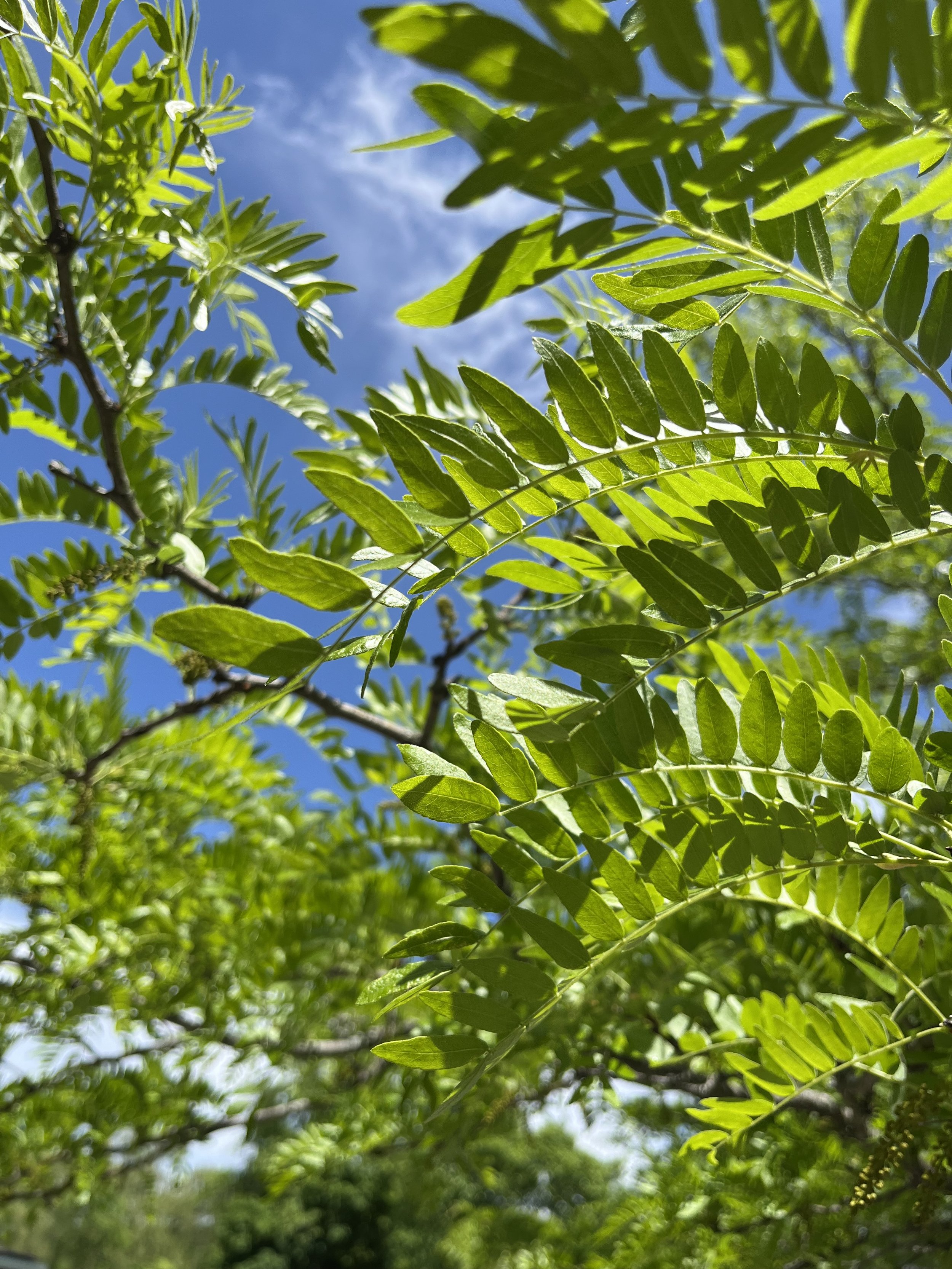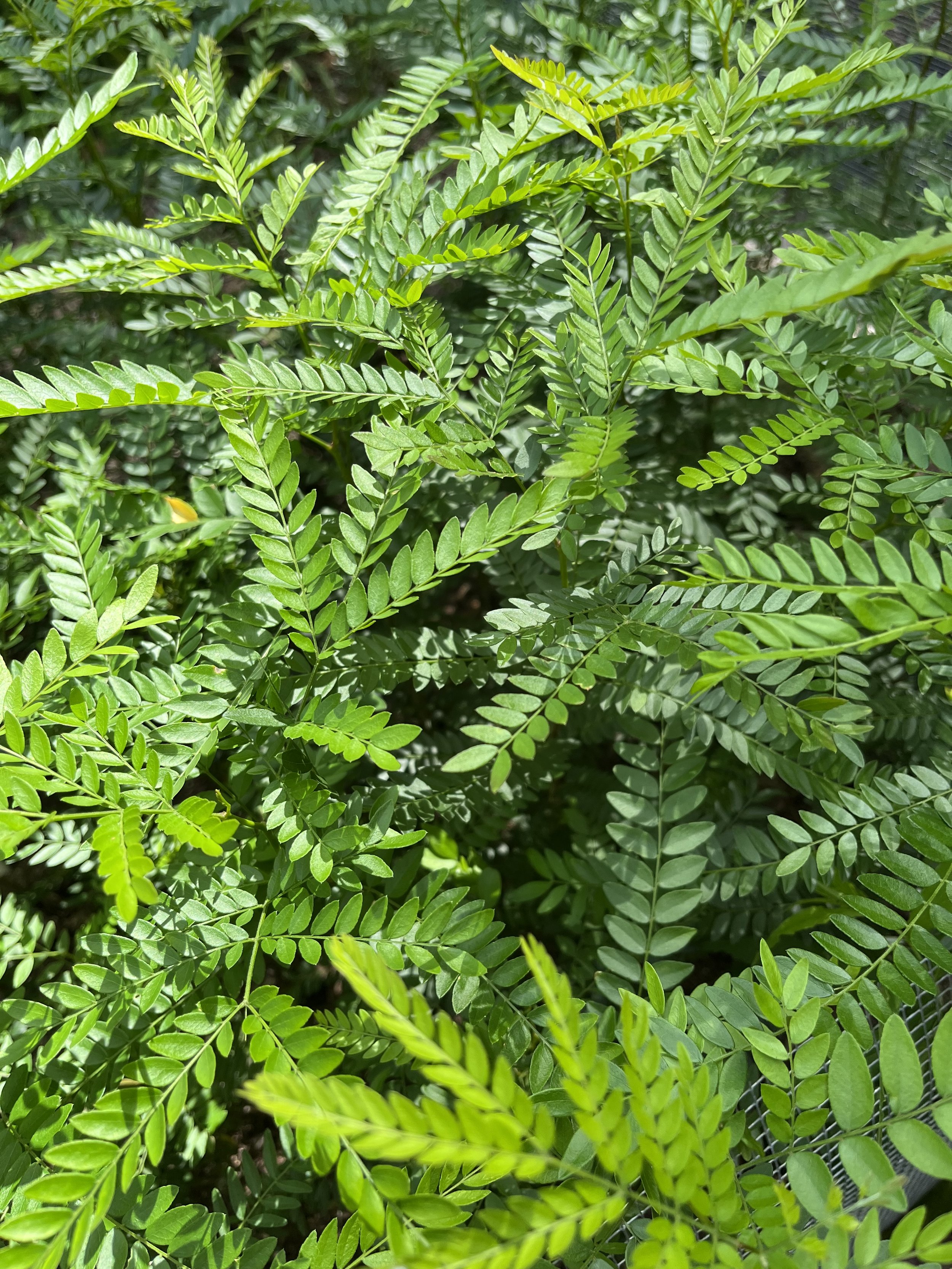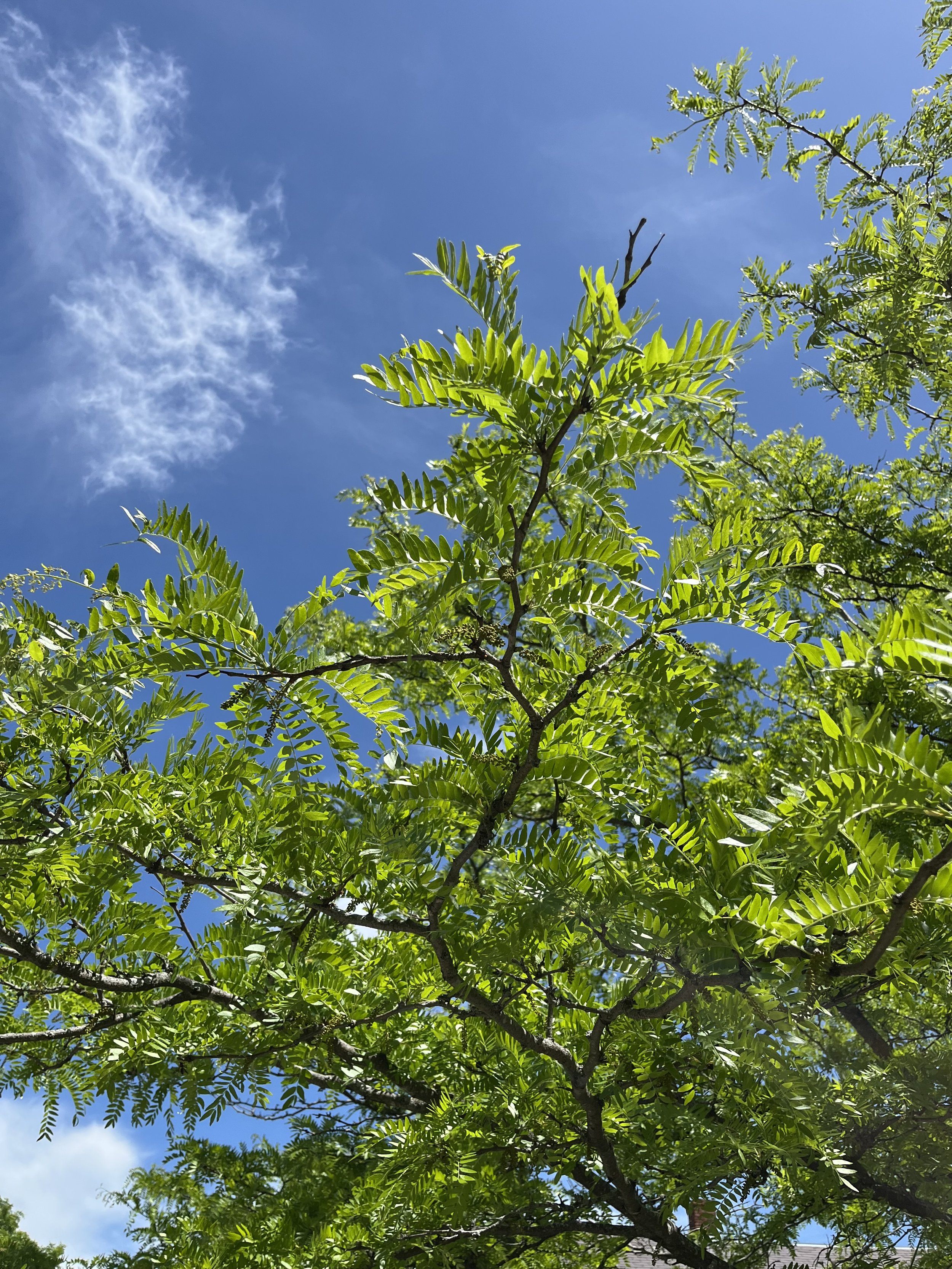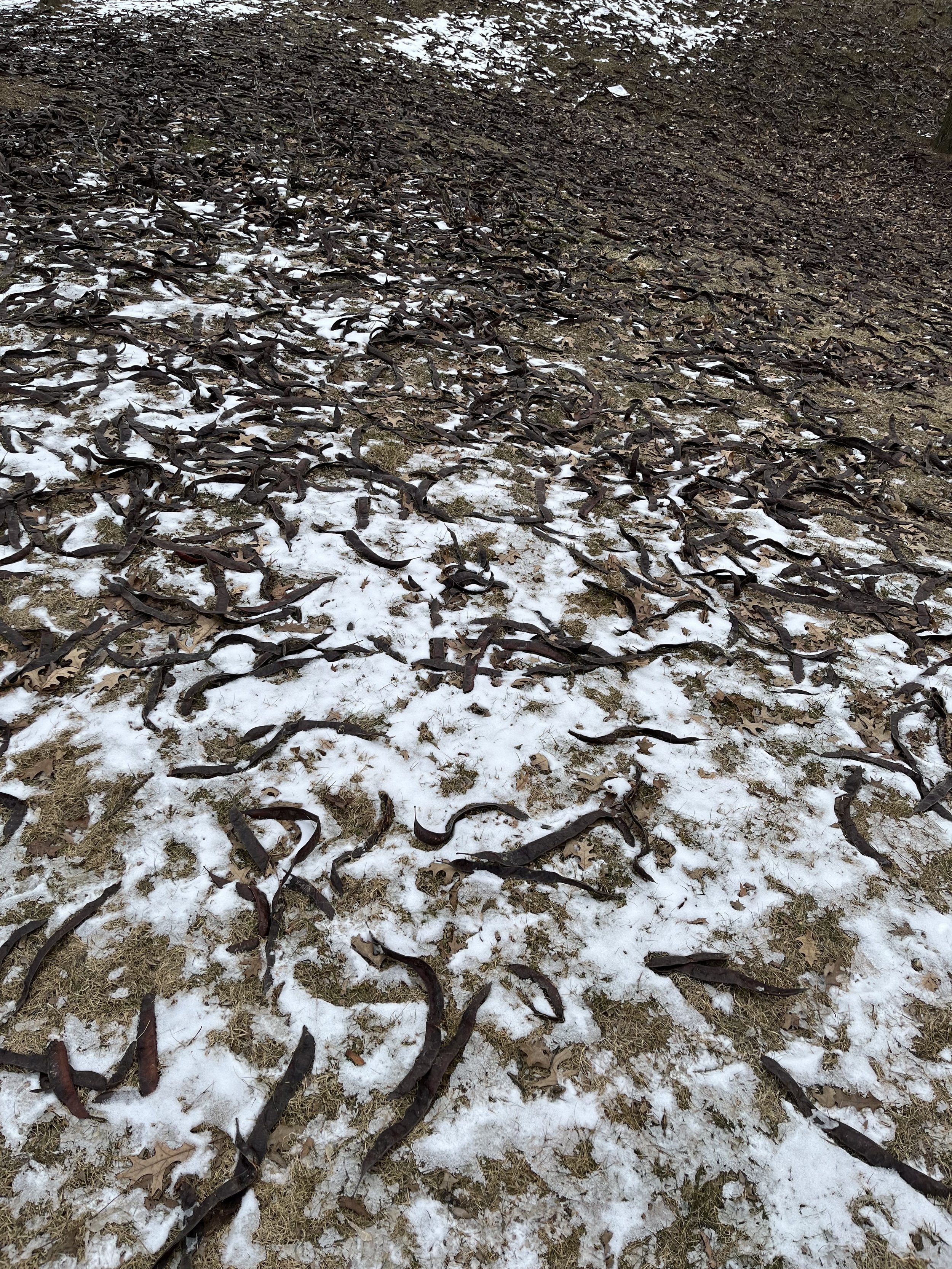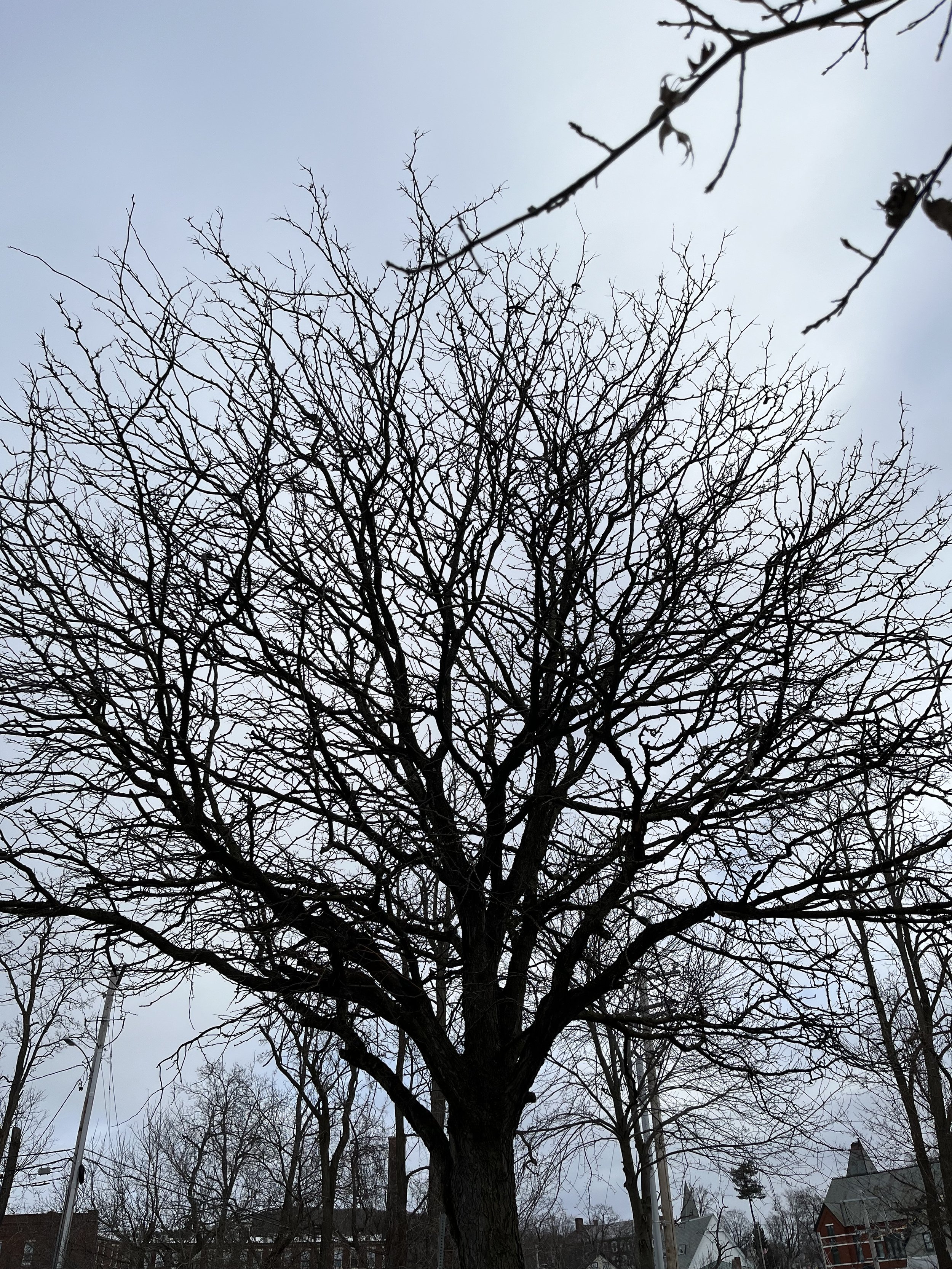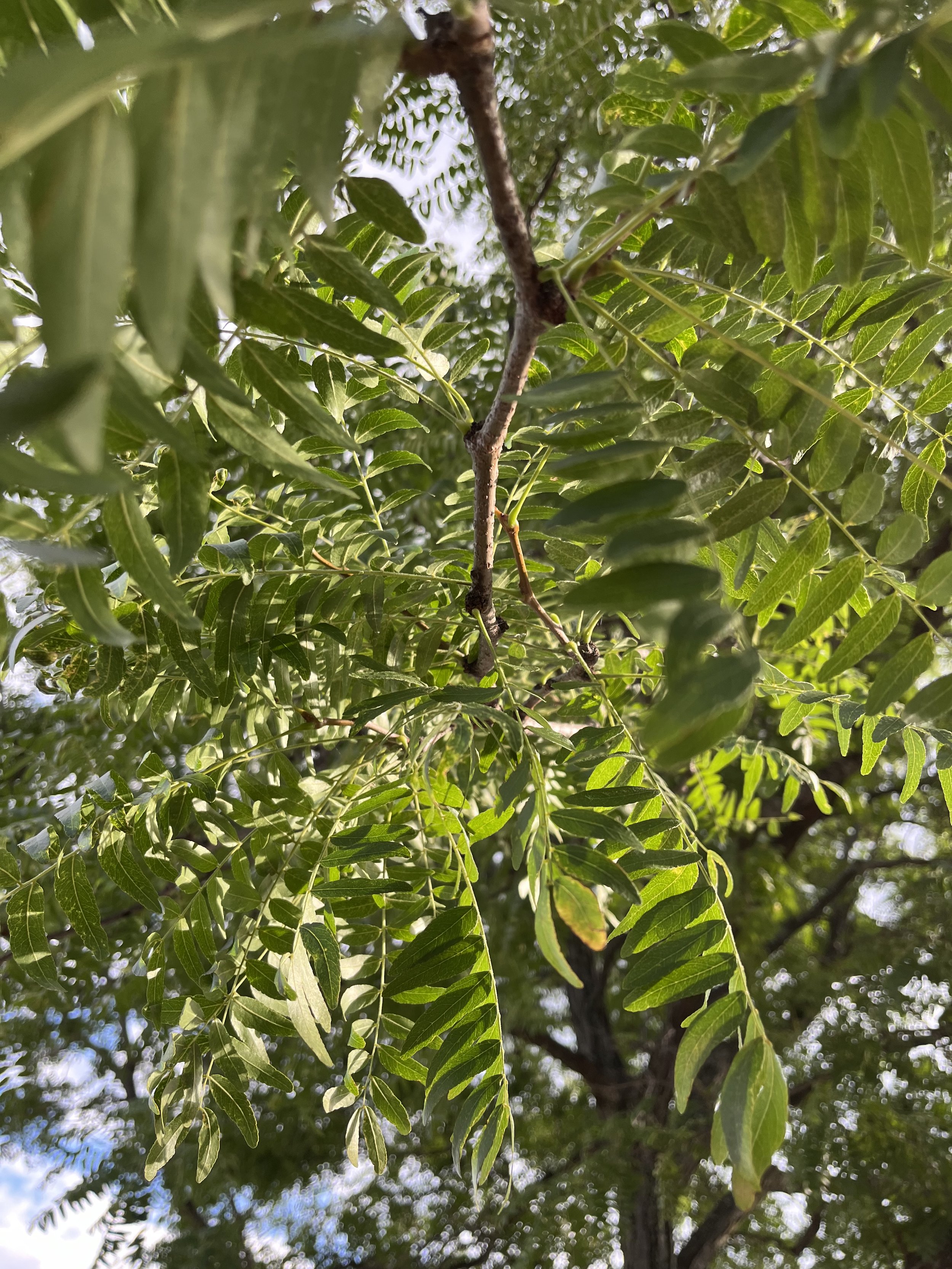Honey Locust
1 yr old seedling trees, 12+ inches
Gleditsia triacanthos
Honey Locust is ubiquitous in our parks, urban landscapes, and front yards here in VT. It's everywhere. It also happens to be an excellent silvopasture species and has the potential to provide abundant food for humans too! In a silvopasture context, honey locust provides a dappled shade that benefits the forage quality of pasture underneath. It is known as an excellent source of fodder, for its leaves and its abundant pods. The pods are very large legumes, 10+ inches, with sweet pulp inside surrounding large bean-like seeds. Pulp from the Honey Locust is like no other flavor. Yes it tastes like honey, but with fruity notes. The pulp can be eaten, made into sugar, or simmered to make a sweet drink. The seeds are edible but we have not tried eating them. Our hope in the coming years is to experiment with the pods as food. We'll explore ways to extract the pulp and separate it from the seeds, find the best methods to process and eat the seeds, etc. Something about this tree that produces an abundance of free sugar and beans has us intrigued. And on top off its value as food and fodder, wood from the Honey Locust is strong, hard, and rot-resistant.
Our Honey Locust seeds come from a large thornless tree in Middlebury. It produces abundant pods that blanket the ground in the fall/winter. Like most Honey Locust, this tree appears to alternate between a heavy pod production year and a light/no pod production year
One quick note on the 'thornless' status of these seedlings: Technically the only way to be sure that your Honey Locust will be thornless is to find a grafted tree--a clone of a thornless tree. We are growing seedlings, not clones, so they are genetically diverse, but according to our research and other nurseries that have trialed seedlings from thornless parents, our seedlings are likely to also carry on the thornless trait. So far we have seen only one individual seedling out of maybe 100 that has thorns. Any Honey Locust we find with thorns will be rogued and not sold. While it is possible for thorns to develop in year two or beyond, it's likely that the trees you receive will be thornless like the mother tree.
1 yr old seedling trees, 12+ inches
Gleditsia triacanthos
Honey Locust is ubiquitous in our parks, urban landscapes, and front yards here in VT. It's everywhere. It also happens to be an excellent silvopasture species and has the potential to provide abundant food for humans too! In a silvopasture context, honey locust provides a dappled shade that benefits the forage quality of pasture underneath. It is known as an excellent source of fodder, for its leaves and its abundant pods. The pods are very large legumes, 10+ inches, with sweet pulp inside surrounding large bean-like seeds. Pulp from the Honey Locust is like no other flavor. Yes it tastes like honey, but with fruity notes. The pulp can be eaten, made into sugar, or simmered to make a sweet drink. The seeds are edible but we have not tried eating them. Our hope in the coming years is to experiment with the pods as food. We'll explore ways to extract the pulp and separate it from the seeds, find the best methods to process and eat the seeds, etc. Something about this tree that produces an abundance of free sugar and beans has us intrigued. And on top off its value as food and fodder, wood from the Honey Locust is strong, hard, and rot-resistant.
Our Honey Locust seeds come from a large thornless tree in Middlebury. It produces abundant pods that blanket the ground in the fall/winter. Like most Honey Locust, this tree appears to alternate between a heavy pod production year and a light/no pod production year
One quick note on the 'thornless' status of these seedlings: Technically the only way to be sure that your Honey Locust will be thornless is to find a grafted tree--a clone of a thornless tree. We are growing seedlings, not clones, so they are genetically diverse, but according to our research and other nurseries that have trialed seedlings from thornless parents, our seedlings are likely to also carry on the thornless trait. So far we have seen only one individual seedling out of maybe 100 that has thorns. Any Honey Locust we find with thorns will be rogued and not sold. While it is possible for thorns to develop in year two or beyond, it's likely that the trees you receive will be thornless like the mother tree.
1 yr old seedling trees, 12+ inches
Gleditsia triacanthos
Honey Locust is ubiquitous in our parks, urban landscapes, and front yards here in VT. It's everywhere. It also happens to be an excellent silvopasture species and has the potential to provide abundant food for humans too! In a silvopasture context, honey locust provides a dappled shade that benefits the forage quality of pasture underneath. It is known as an excellent source of fodder, for its leaves and its abundant pods. The pods are very large legumes, 10+ inches, with sweet pulp inside surrounding large bean-like seeds. Pulp from the Honey Locust is like no other flavor. Yes it tastes like honey, but with fruity notes. The pulp can be eaten, made into sugar, or simmered to make a sweet drink. The seeds are edible but we have not tried eating them. Our hope in the coming years is to experiment with the pods as food. We'll explore ways to extract the pulp and separate it from the seeds, find the best methods to process and eat the seeds, etc. Something about this tree that produces an abundance of free sugar and beans has us intrigued. And on top off its value as food and fodder, wood from the Honey Locust is strong, hard, and rot-resistant.
Our Honey Locust seeds come from a large thornless tree in Middlebury. It produces abundant pods that blanket the ground in the fall/winter. Like most Honey Locust, this tree appears to alternate between a heavy pod production year and a light/no pod production year
One quick note on the 'thornless' status of these seedlings: Technically the only way to be sure that your Honey Locust will be thornless is to find a grafted tree--a clone of a thornless tree. We are growing seedlings, not clones, so they are genetically diverse, but according to our research and other nurseries that have trialed seedlings from thornless parents, our seedlings are likely to also carry on the thornless trait. So far we have seen only one individual seedling out of maybe 100 that has thorns. Any Honey Locust we find with thorns will be rogued and not sold. While it is possible for thorns to develop in year two or beyond, it's likely that the trees you receive will be thornless like the mother tree.
